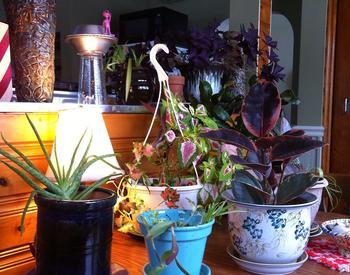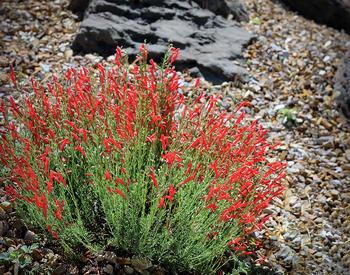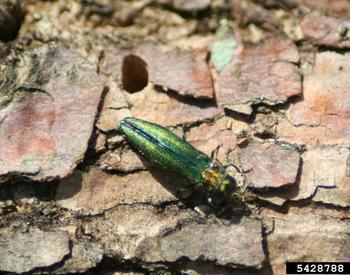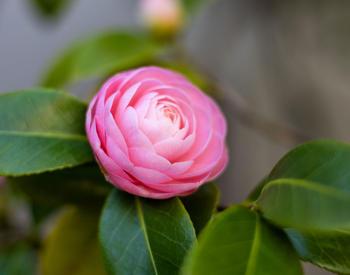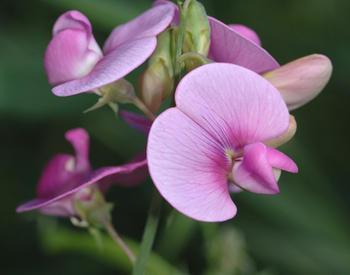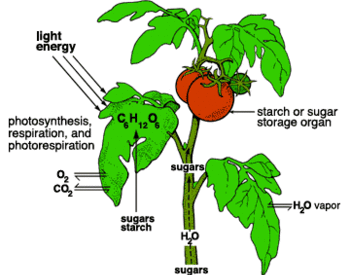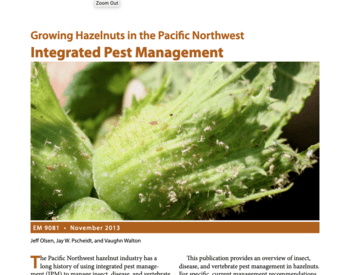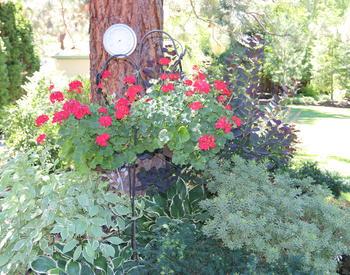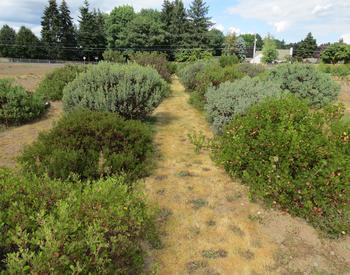Location, planting and transplanting
Hydrangeas like mostly shady spots, but some varieties can take more sun. The more sun your hydrangea gets, the more frequent watering that may be necessary to maintain the blooms and leaves. Plant in the spring after spring frosts but before the hottest summer months have set in. The active growth period for hydrangeas is March through September. You may transplant established hydrangeas, but it’s best to move the large specimens in spring or fall.
Soil
Soil should be well draining and rich with organic matter, bark and alternatives to peat moss. Try to avoid animal manure as it tends to be too high in nitrogen. Well-aged manure is acceptable. Test your drainage before planting; it may require some amendments to improve drainage. If your soil is holding too much water, add sand or bark. If your soil is draining too quickly, add garden mulch or alternatives to peat moss.
Water
Hydrangeas like lots of water, but it is possible to overwater, especially with slow-draining soil. Hydrangeas don’t like to have their roots sitting in water. Signs of too much water are brown leaf edges and leaf drop. Signs of not enough water are droopy leaves that perk up within a half hour of watering. Drip irrigation is usually successful.
Common pests and disease
Slugs and snails like certain hydrangeas but can be stopped with slug and snail bait. Powdery mildew and black spot occur in shady locations when the hydrangea gets poor air circulation. Discard any leaves with traces of mildew or fungus. Rust spots occur with too much direct sunlight after overhead watering. Water in early morning or late afternoon at the base of the plant
Fertilizer
Use a balanced time-released fertilizer a few times a year — spring and early fall. It is not always necessary to fertilize; most hydrangeas bloom better if a little starved. After hydrangeas form buds and begin to bloom, yellowing leaves in the center of the plant is a sign that they need some fast-acting fertilizer. If you’re wanting blue and purple blooms, be sure that you use a fertilizer that is low in phosphate. Phosphate limits the plants' ability to absorb aluminum.
Color
Hydrangeas (with the exception of white ones) are at least a little bit pH sensitive. In acidic soil conditions (less than 6 on the pH scale) with available aluminum, you will tend to have blue and purple blooms. It’s the aluminum in the soil that changes the pigments in the blooms to blue and purple. Soil needs to be acidic for the plant to absorb the aluminum. To increase acidity, amend your soil with aluminum sulfate (established plants only), coffee grounds, rusty nails and coins, or conifer needles. In neutral soils (6 to 7.5), hydrangeas tend to have red and pink blooms. To increase the alkalinity in soil, add garden lime or super phosphate.
Blooms, dried
Hydrangeas don’t dry well when freshly flowering. It’s best to wait about six to eight weeks after blooming until the head has a papery appearance. Cut in the morning and be sure to remove all leaves from the stem. You may hang the cut bloom upside down or in a vase with just a few inches of water. Keep the blooms out of the sun in a well-circulated area. Once dried, the hydrangea can be sprayed with floral spray paint for deeper colors.
Blooms, cut
Hydrangeas don’t cut well when freshly flowering. Wait at least a few weeks after the bloom is completely open. Remember, the older the bloom, the longer it will last. According to experts, the trick is getting that oxygen bubble out of the stem. Leaves take moisture away from the stem, so remove all leaves. If possible, cut just little stems. You may soak the entire cut in cold water, use florist alum gel to seal the end of the stem (and drain the oxygen bubble) or put the stem in boiling water.
Pruning
When to prune is mostly a matter of convenience. We have pruned both in the fall and early spring and had good results either way. It does seem that the later and the more harshly you prune, the fewer flower blooms can be expected the next season. This is because most hydrangeas bloom on "old" wood. With young plants, be sure to prune enough growth to form them into a good shape and no more. The 'Paniculata' and 'Arborescens' varieties bloom on new wood, so you may cut them for size in the spring or fall.
You may prune in the fall after blooming or in the spring after the hard frosts are over. Remember, the later you prune and the more drastically you prune, the fewer blooms you’ll have. Prune to the first leaf node of this year’s growth.
Cut 1⁄2” to 1” above a budding node at a 45-degree angle. These buds will be the new leaves and blooms of your hydrangea. If you live in an area that is prone to spring frost, protect these buds with bed sheets or frost cloth (a light felt) on nights that frost is expected.
Established hydrangeas tend to have branches that die back every year. These are completely woody branches inside the hydrangea. Cut up to a dozen of these branches down to the ground to spur new growth at the base.

